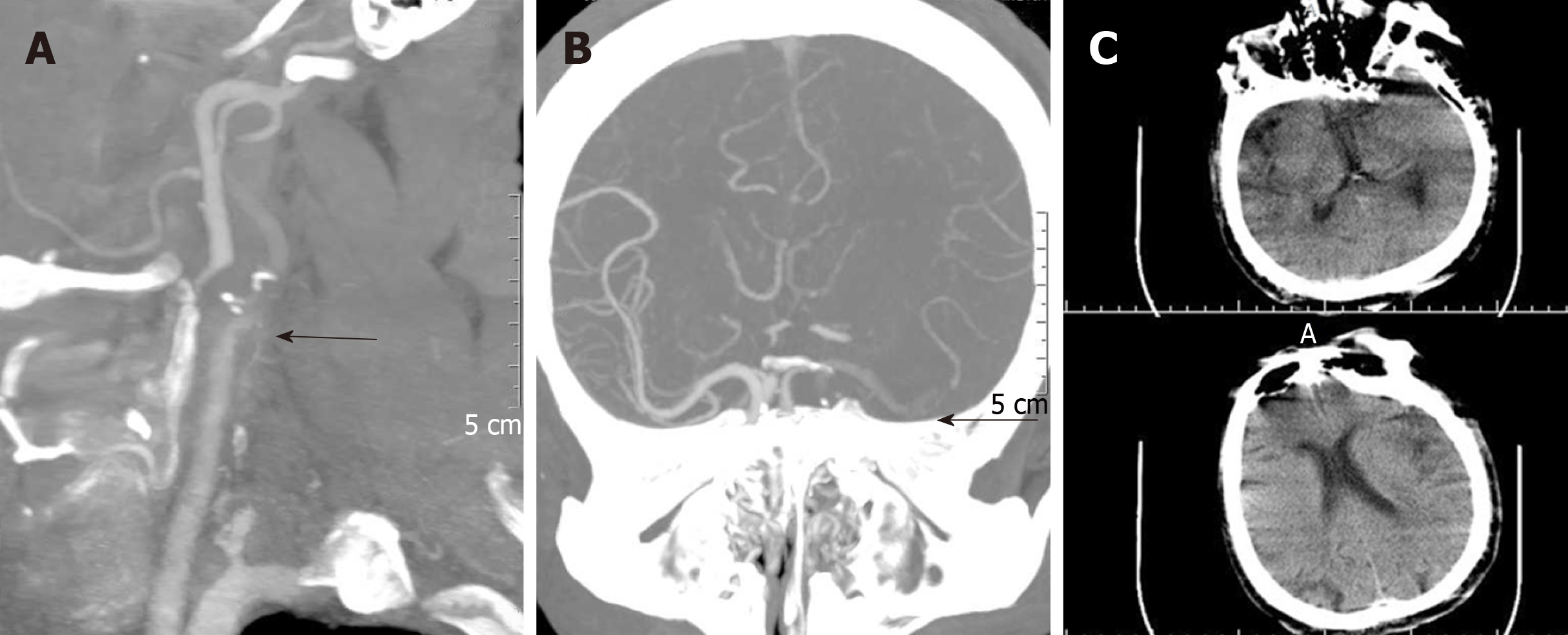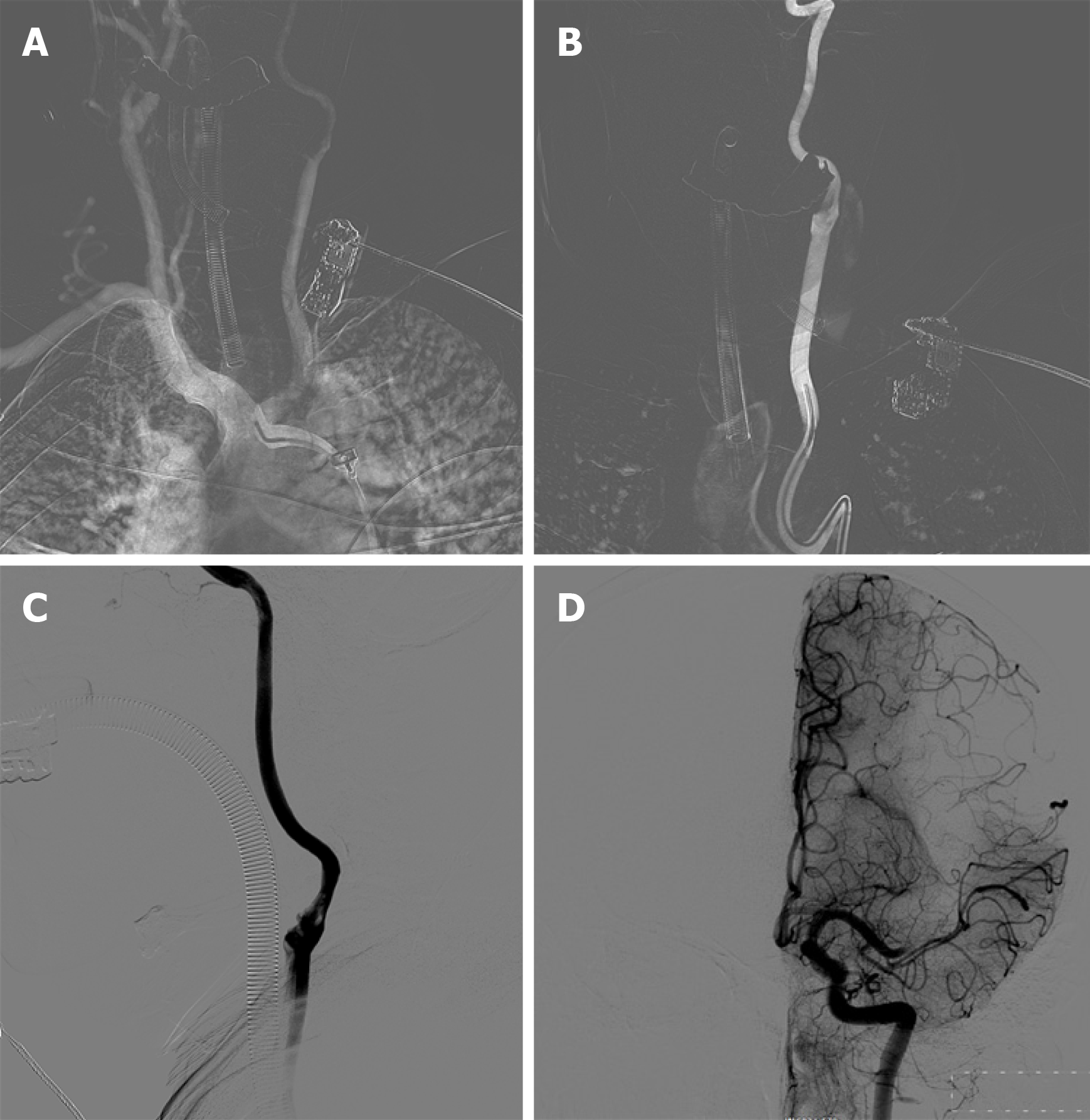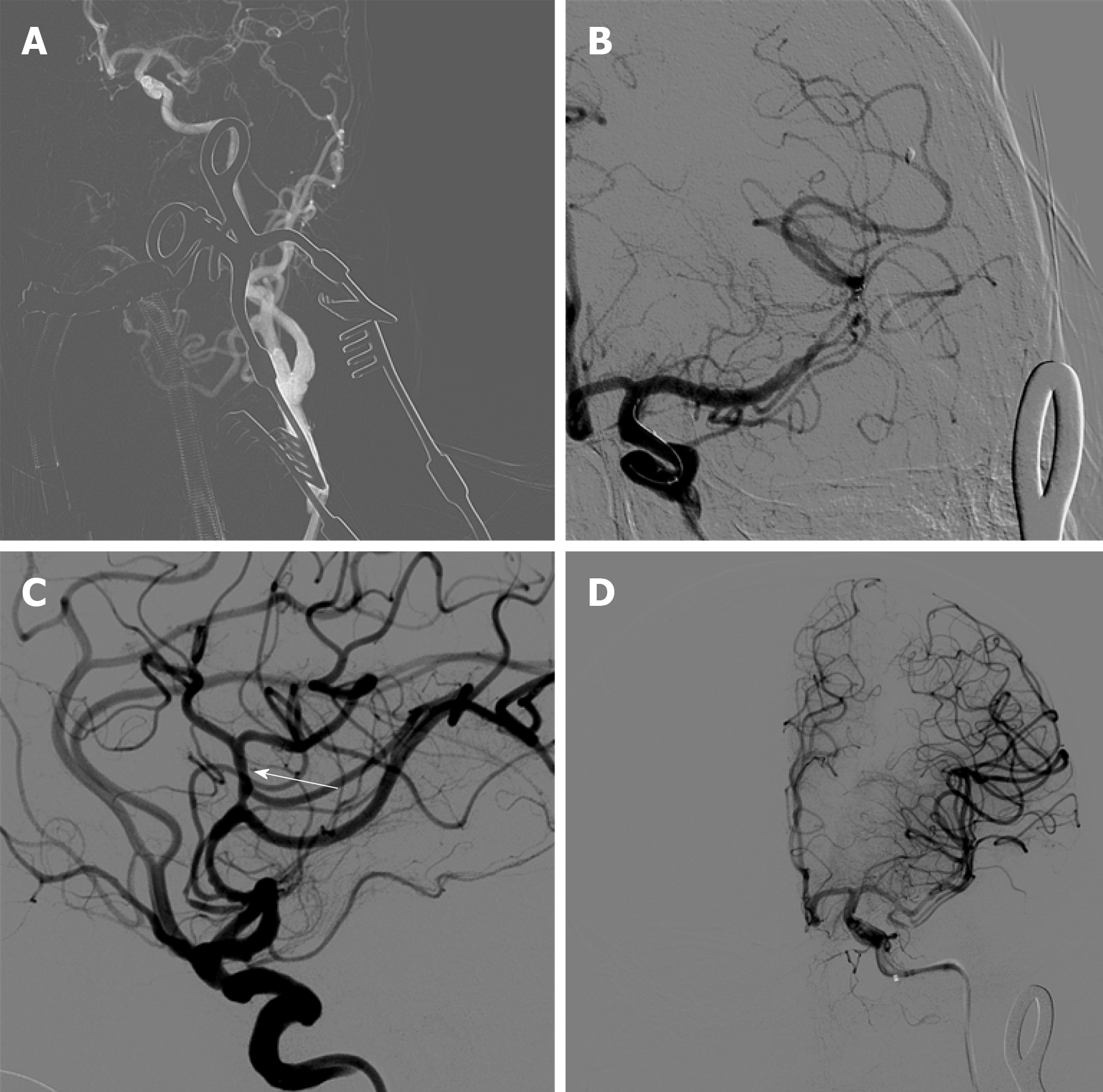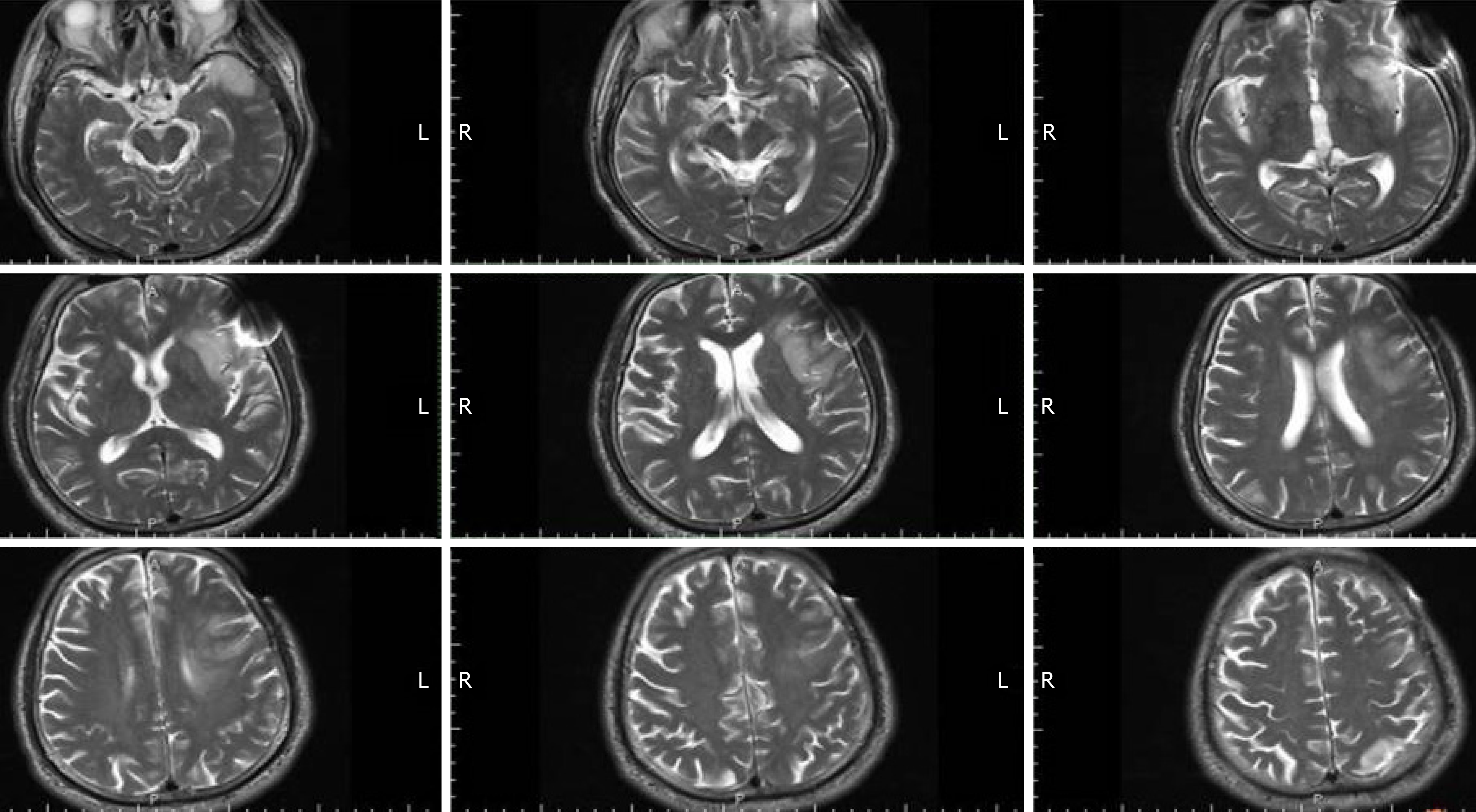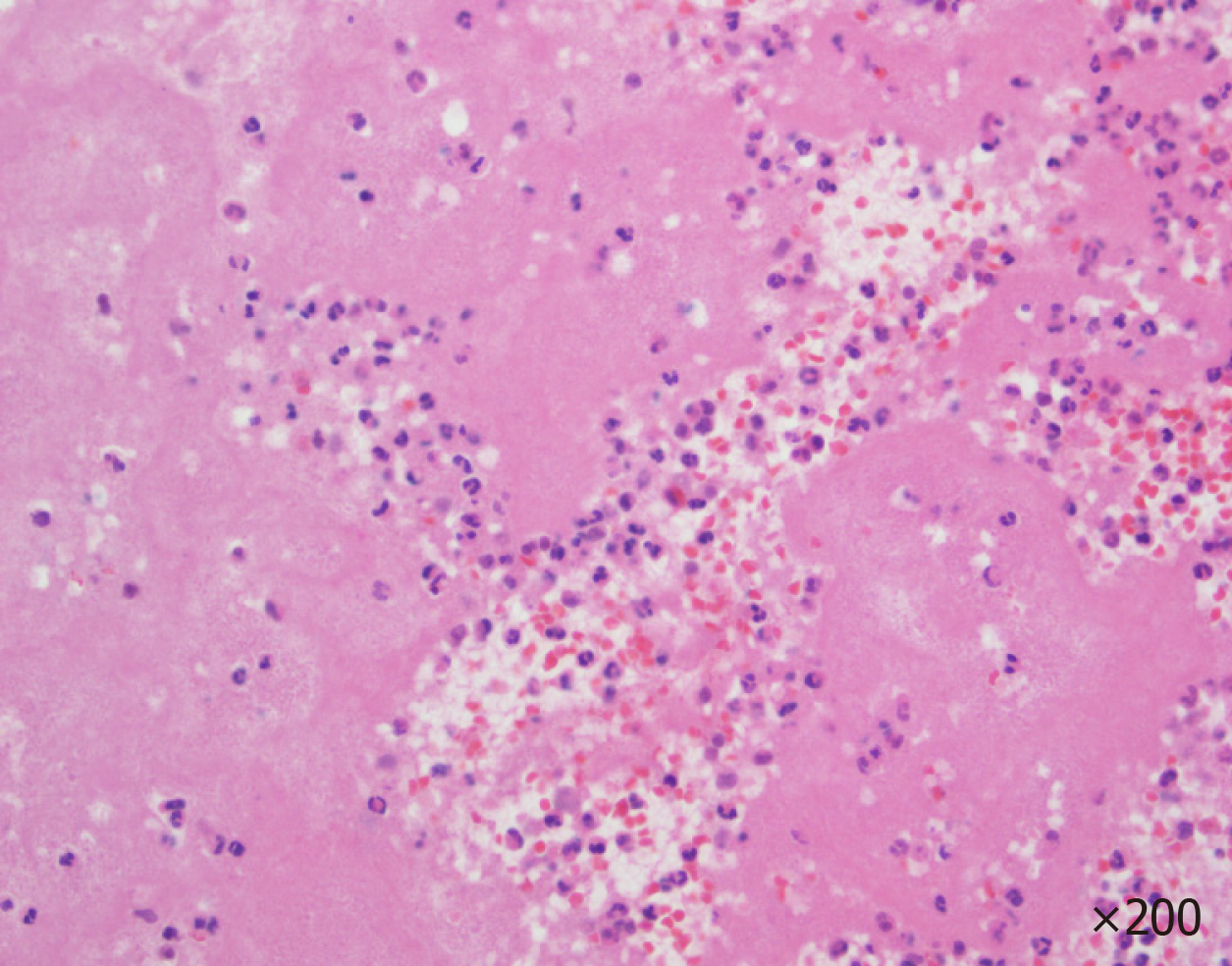Copyright
©The Author(s) 2020.
World J Clin Cases. Feb 6, 2020; 8(3): 630-637
Published online Feb 6, 2020. doi: 10.12998/wjcc.v8.i3.630
Published online Feb 6, 2020. doi: 10.12998/wjcc.v8.i3.630
Figure 1 Head and neck computed tomography angiography and brain computed tomography findings.
A: Computed tomography angiography (CTA) of the neck showing an embolism at the left carotid bifurcation; B: Intracranial CTA showing an embolism in the upper trunk of the left middle cerebral artery; C: Brain computed tomography showing a small infarction in the left insular lobe; the Alberta Stroke Program Early CT Score was 9.
Figure 2 Intracranial angiography findings.
A: Subaortic arch angiography shows a type III aortic arch where the left common carotid artery shares the main trunk with the brachiocephalic trunk; B: Simmon 2 catheterangiography showing that the left external carotid artery was not visible, and the left internal carotid artery showing slow blood flow; C: There was a thrombus at the beginning of the left internal carotid artery; D: The upper trunk of the left middle cerebral artery was occluded, but the anterior cerebral artery compensated for the blood supply of the middle cerebral artery via the lateral branches of the meninges.
Figure 3 Imaging during surgery.
A: An 8F guiding catheter was aspirated at the bifurcation of the left carotid artery, and no blood was observed; B: Percutaneous incision to expose the carotid artery, and the internal carotid blood flow was occluded; C: Partial recanalization of the external carotid artery was obtained by low-flow hand push angiography, but some clots remain unremoved; D: Carotid artery incision thrombectomy.
Figure 4 Middle cerebral artery blood flow recanalization modified thrombolysis in cerebral infarction level III.
A: The upper trunk of the left middle cerebral artery is occluded, and the thrombus did not escape; B: Thrombectomy was performed with a Solitaire FR 6–30 mm stent; C: After thrombectomy, the blood flow was restored; D: Modified thrombolysis in cerebral infarction was stage III.
Figure 5 Brain magnetic resonance imaging shows small infarcts in the frontal and temporal lobes.
Figure 6 Pathological examination of the thrombus.
- Citation: Zhang M, Hao JH, Lin K, Cui QK, Zhang LY. Combined surgical and interventional treatment of tandem carotid artery and middle cerebral artery embolus: A case report. World J Clin Cases 2020; 8(3): 630-637
- URL: https://www.wjgnet.com/2307-8960/full/v8/i3/630.htm
- DOI: https://dx.doi.org/10.12998/wjcc.v8.i3.630









